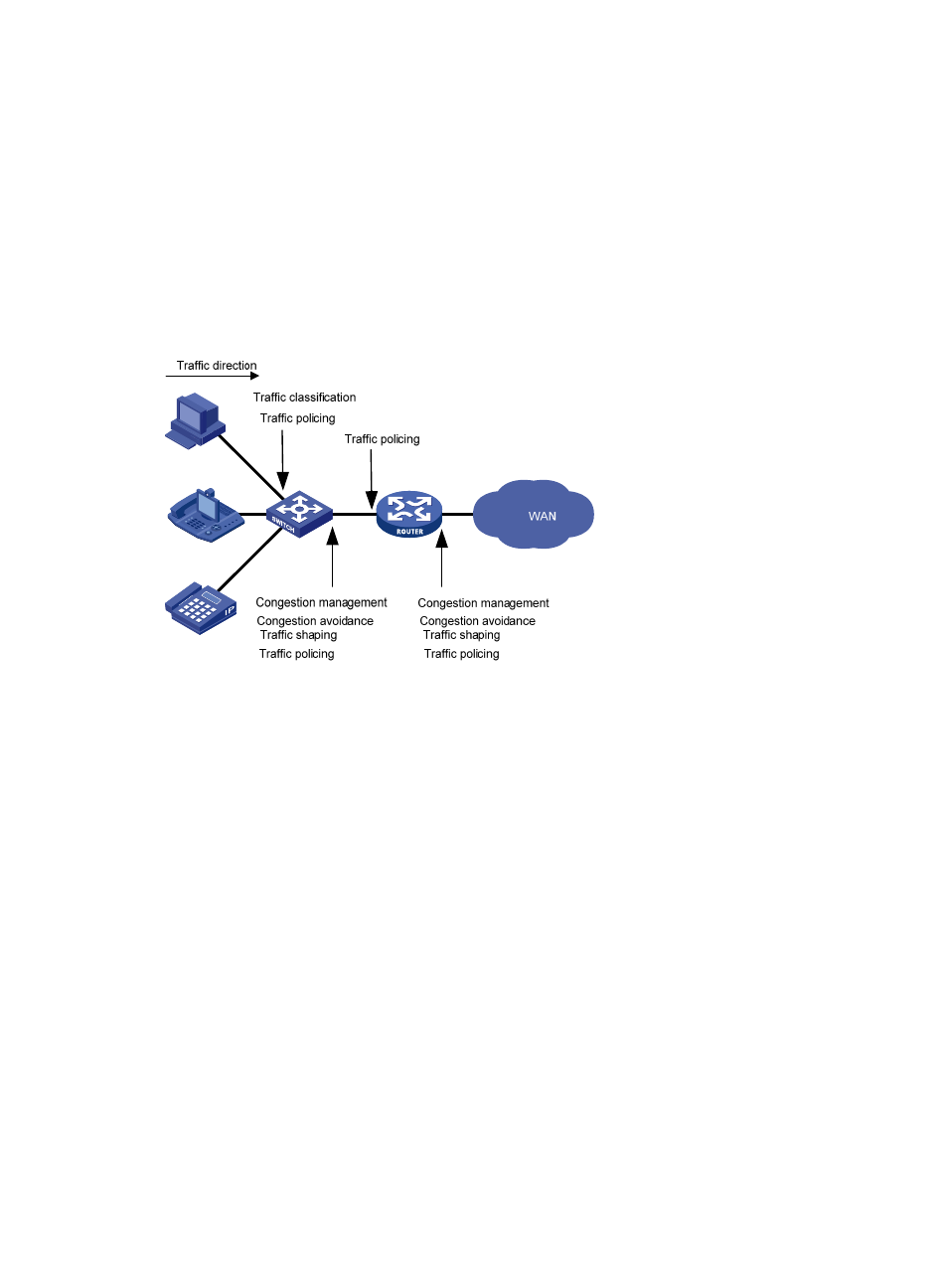Qos techniques overview, Deploying qos in a network – H3C Technologies H3C S6300 Series Switches User Manual
Page 25

15
QoS techniques overview
The QoS techniques include traffic classification, traffic policing, traffic shaping, rate limit, congestion
management, and congestion avoidance. The following section briefly introduces these QoS techniques.
All QoS techniques in this document are based on the DiffServ model.
Deploying QoS in a network
Figure 2 Position of the QoS techniques in a network
As shown in
, traffic classification, traffic shaping, traffic policing, congestion management, and
congestion avoidance mainly implement the following functions:
•
Traffic classification—Uses certain match criteria to assign packets with the same characteristics to
a traffic class. Based on traffic classes, you can provide differentiated services.
•
Traffic policing—Polices flows and imposes penalties to prevent aggressive use of network resources.
You can apply traffic policing to both incoming and outgoing traffic of a port.
•
Traffic shaping—Adapts the output rate of traffic to the network resources available on the
downstream device to eliminate packet drops. Traffic shaping usually applies to the outgoing traffic
of a port.
•
Congestion management—Provides a resource scheduling policy to determine the packet
forwarding sequence when congestion occurs. Congestion management usually applies to the
outgoing traffic of a port.
•
Congestion avoidance—Monitors the network resource usage. It is usually applied to the outgoing
traffic of a port. When congestion worsens, congestion avoidance reduces the queue length by
dropping packets.
- H3C S5820V2 Series Switches H3C S5830 Series Switches H3C S5830V2 Series Switches H3C S3600V2 Series Switches H3C S6800 Series Switches H3C S3100V2 Series Switches H3C S12500-X Series Switches H3C S5560 Series Switches H3C WX6000 Series Access Controllers H3C WX5000 Series Access Controllers H3C WX3000 Series Unified Switches H3C LSWM1WCM10 Access Controller Module H3C LSWM1WCM20 Access Controller Module H3C LSQM1WCMB0 Access Controller Module H3C LSRM1WCM2A1 Access Controller Module H3C LSBM1WCM2A0 Access Controller Module H3C S9800 Series Switches H3C S5130 Series Switches H3C S5120 Series Switches
